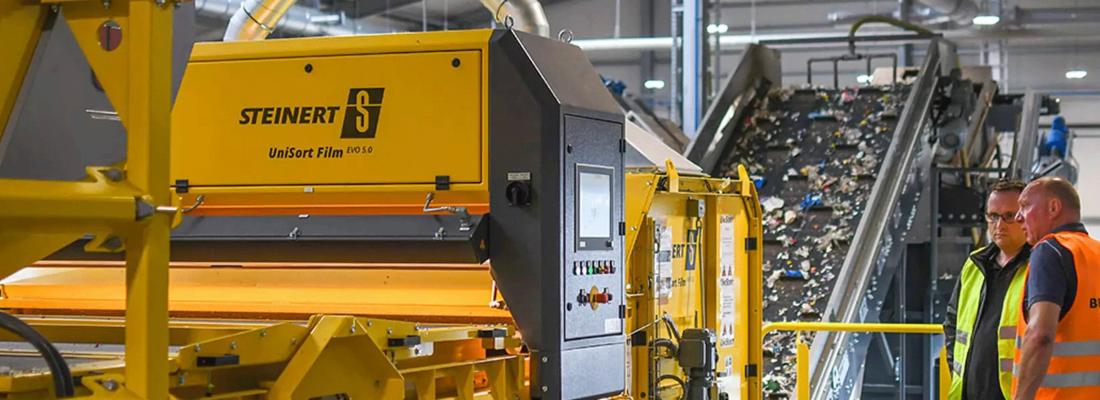STEINERT sorting solutions will also be presented in the VDMA and R-Cycle-Community shared spaces, where STEINERT is working with representatives from the entire plastics industry to drive forward the use of plastic recyclates in high-value applications.
STEINERT develops technologies for particularly challenging sorting applications. The Cologne-based sorting specialists were the first to manage to detect black objects and sort 2D materials, such as films. STEINERT’s UniSort Film EVO 5.0 provides a solution for pure-grade sorting of 2D plastics. Using a circulating, self-contained air flow, the sorting machine stabilises films on the conveyor belt such that they can be detected by the near-infrared (NIR) sensor and then sorted.
Wilken Plastics Energy GmbH in Haren (Ems), Germany puts its trust in the UniSort Film EVO 5.0 to keep all options open: “We currently sort PP, PE and, brand new to us, mixed polyolefins (MPO). But things can change at any time depending on market conditions,” reports Bernhard Wilken, Managing Director of the Wilken Group. This is used in Haren to sort hard plastic or film flakes for re-granulation, either by colour or by type.
Very high quality levels for plastic flakes
What sets the NIR sensor used by STEINERT apart is its hyperspectral imaging (HSI) technology, which allows the tiniest of differences in the near-infrared spectrum to be detected. This enables objects such as PET bottles to be distinguished from PET trays, even if the material has already been shredded – and without using additional hardware. This is particularly useful when sorting plastic flakes. For very high levels of purity to be achieved during sorting, as the preliminary stage to re-granulation, the design of the UniSort Finealyse is also optimised for flake sorting. A high-speed belt together with a directed air stream stabilise even the smallest of objects for the best possible quality levels with minimal material loss for use as quality control and evaluation.
Sorting black plastics by polymer type
Since 2014, using hyperspectral imaging technology, the UniSort Black has enabled the detection and therefore positive separation of black and dark plastics. This cleans light fractions with less compressed air required, and dark fractions are recovered cost-effectively. Two years later with the unveiling of the UniSort BlackEye flake-sorting machine and the addition of the mid-infrared (MIR) range to the HSI spectrum, black polyolefins (PO) can now finally be purely sorted into their constituent parts, such as polyethylene (PE) and polypropylene (PP), but also polystyrene (PS) and acrylonitrile butadiene styrene copolymers (ABS). This development has been key to replacing more polymer granulates with new kinds of recyclates.
At the "GRAF Kompetenzzentrum Rohstoffe" facility in Herbolzheim, Germany, this technology should make it possible to use 95% secondary raw materials for GRAF products in five years' time. A total of 15 UniSort sorting systems optimised for flake sorting are used to ensure the best possible qualities with minimal oversorting before re-granulation. "Unfortunately, too few sorters still know that black plastics can be separated. But there is a solution!" says Jörg Drägert, Head of Raw Materials Management at GRAF.




